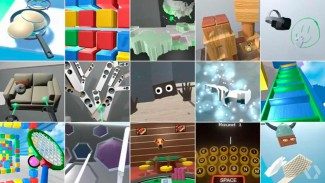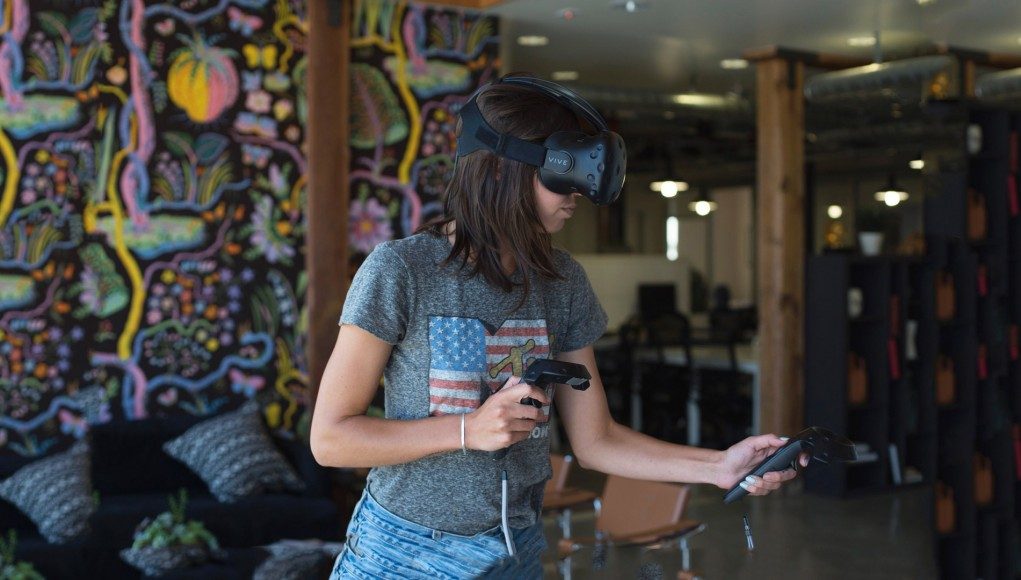Takeaways
While we saw a few high-level trends in our tests, no single implementation was a consensus top pick. This wasn’t unexpected; going into this exercise, we didn’t think there would ever be a ‘right’ answer. But we were able to draw plenty of conclusions from the input we received.
Loose Links Work Best When the Connection Can be Broken
Our testers reported that this mechanic most naturally conveyed a feeling of heaviness. Without a strict cutoff for tension, objects can start to feel floaty and unresponsive to the user’s movement. Breaking the link helps ground the object, while forcing the user to consciously alter their behavior to account for the object’s perceived ‘weight.’
But Unless It’s Vital to the Interaction, Weight Is an Annoyance
Our testers enjoyed interacting with loose links, and many thought that the mechanic was fun and playful. When used sparingly, to purposefully draw attention to the weight of something, we think loose links could be a useful system to further explore.
[gfycat data_id=”BabyishNiceAfricanmolesnake” data_autoplay=true data_controls=false]
But when we asked our testers what method they would prefer if they had to pick up many objects, they overwhelmingly chose the simplest direct link. When efficiency is the priority, people don’t want to be bogged down by ‘forced’ reminders of their human shortcomings.
This might inform our future projects in a few ways. If precisely mimicking reality is important, we might simply avoid letting the user attempt to pick up something extremely large or heavy. Or we could choose to embrace it. Arguably the most exciting aspect of virtual reality is that it allows us to see and do things that aren’t possible in real life.
More Feedback is Welcome — and Don’t Forget Sound!
Testers gravitated towards more feedback over less with one exception: they found visual feedback a distraction if they were unable to clearly understand the relationship between it and their actions. Otherwise, the inclusion of visuals and haptics was useful.
And just in case it hasn’t been said enough, consider how sound can reinforce the physical aspects of an environment. When we chose to add sound to this exercise, we didn’t think much of it. But it turned out to have a huge impact on how our testers perceived weight. The thuds of heavy objects hitting the ground or rubbing against each other reinforced the differences in mass.
‘Basic’ Interactions in VR Are More Complicated Than They Seem
Planning for physics-based interaction models was much trickier for us than traditional screen-based UX, since there are so many factors influencing the final result. There’s an inherent loss of control when you design for a framework in which interactions occur, rather than the interactions themselves. The game industry has been dealing with this for ages, and the rest of us are just catching up.
Final Thoughts
We found a lot of value in dissecting interactions around weight simulation. We know time is always a limiting factor, and breaking down every single element of each and every interaction would be an impossible task — but identifying and breaking down recurring interactions is a way to both optimize them and prepare you for other more specific interactions that you will inevitably face in the future. You might find that what works in theory might not work in practice.

We also want to highlight the importance of side goals for these exercises (for us, that was greater Unity familiarity and a basic boilerplate environment). It’s valuable to have something concrete and attainable to work towards, to offset the unknowns of organic exploration.
So what’s our recommendation? We’ve found that so much is dependent on the experience itself. It’s likely that in many cases, the restraints we tried to impose by simulating weight would be unwelcome, as they slow the user down and draw their focus to the interaction itself rather than the action they’re trying perform. So unless you have reason to draw specific attention to an object’s weight, it makes more sense to keep things simple and use direct links.
That said, we think there is something promising with loose links in which the connection breaks when the tension is too high. There’s plenty of room to fine-tune and explore this, and to consider other factors: irregular shapes or the starting positions of objects, or perhaps using two hands to pick something up. This is just a start, and we’re excited at the potential implementations.
Try it For Yourself and Tell Us What You Think
We’re interested in getting input / advice from the community on this mechanic, so we’ve open sourced our Unity project and released it as an executable. You can find both on GitHub.
Have you found an alternative solution, or seen it done well in an existing experience? Comment and let us know!







